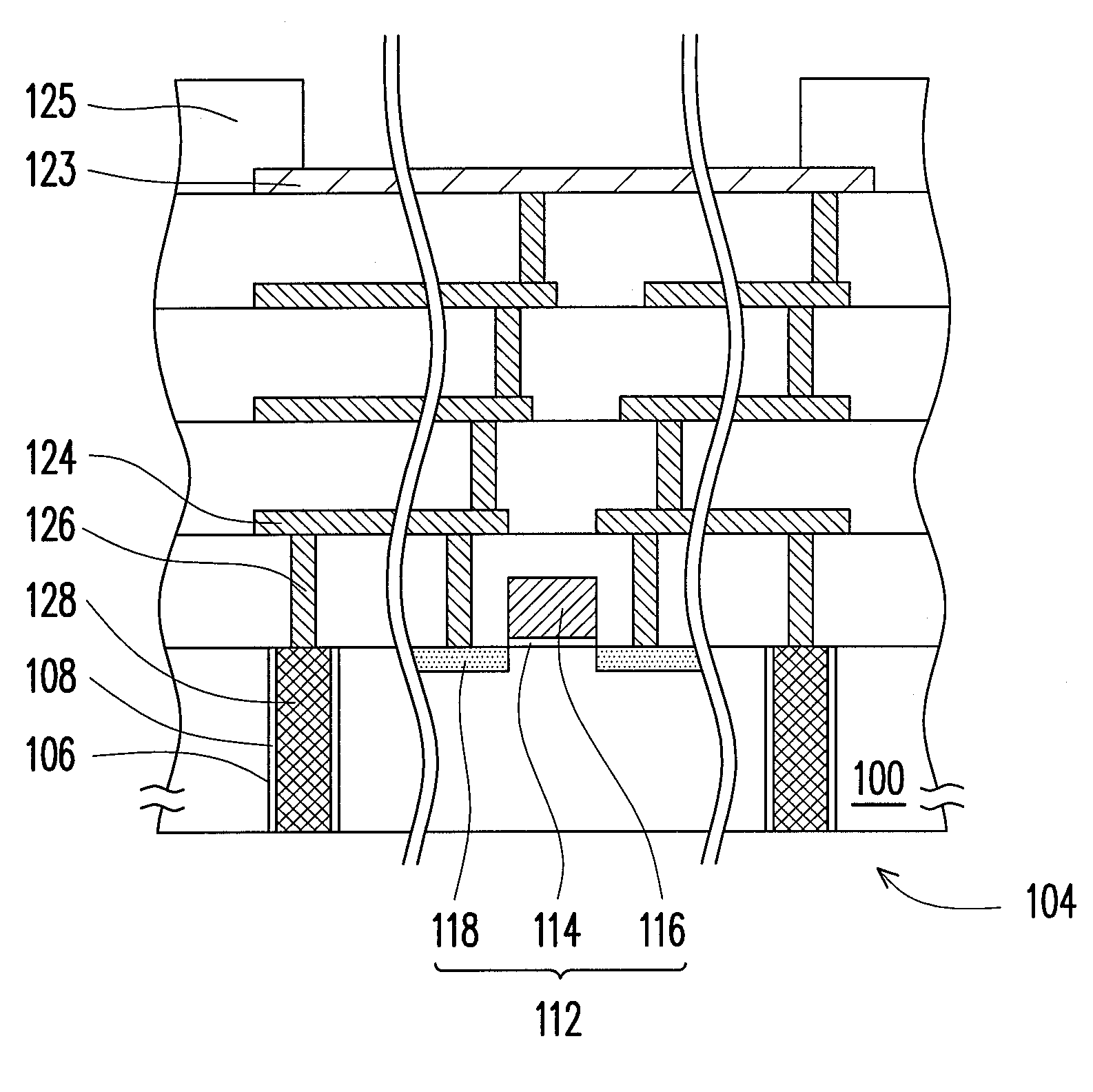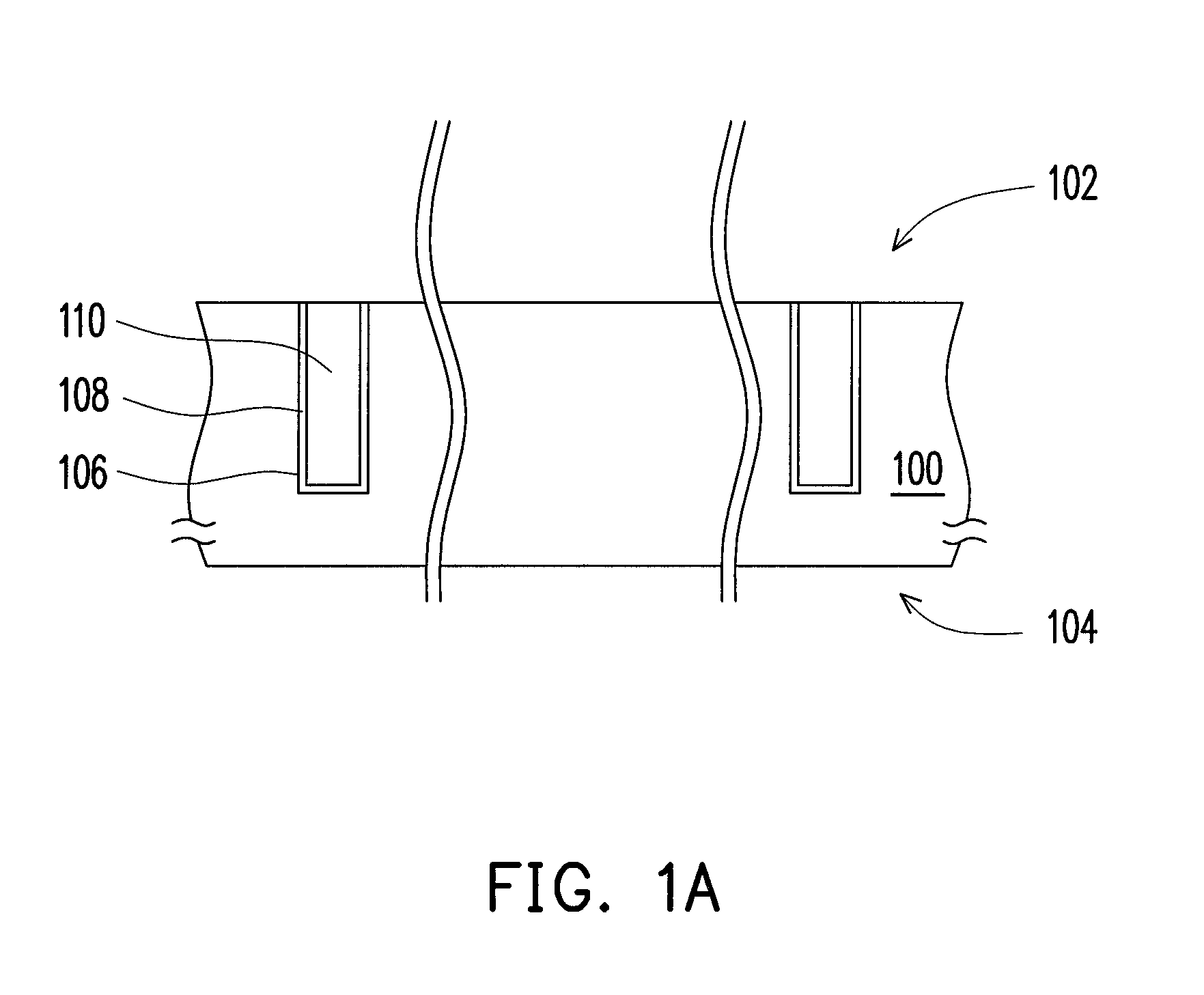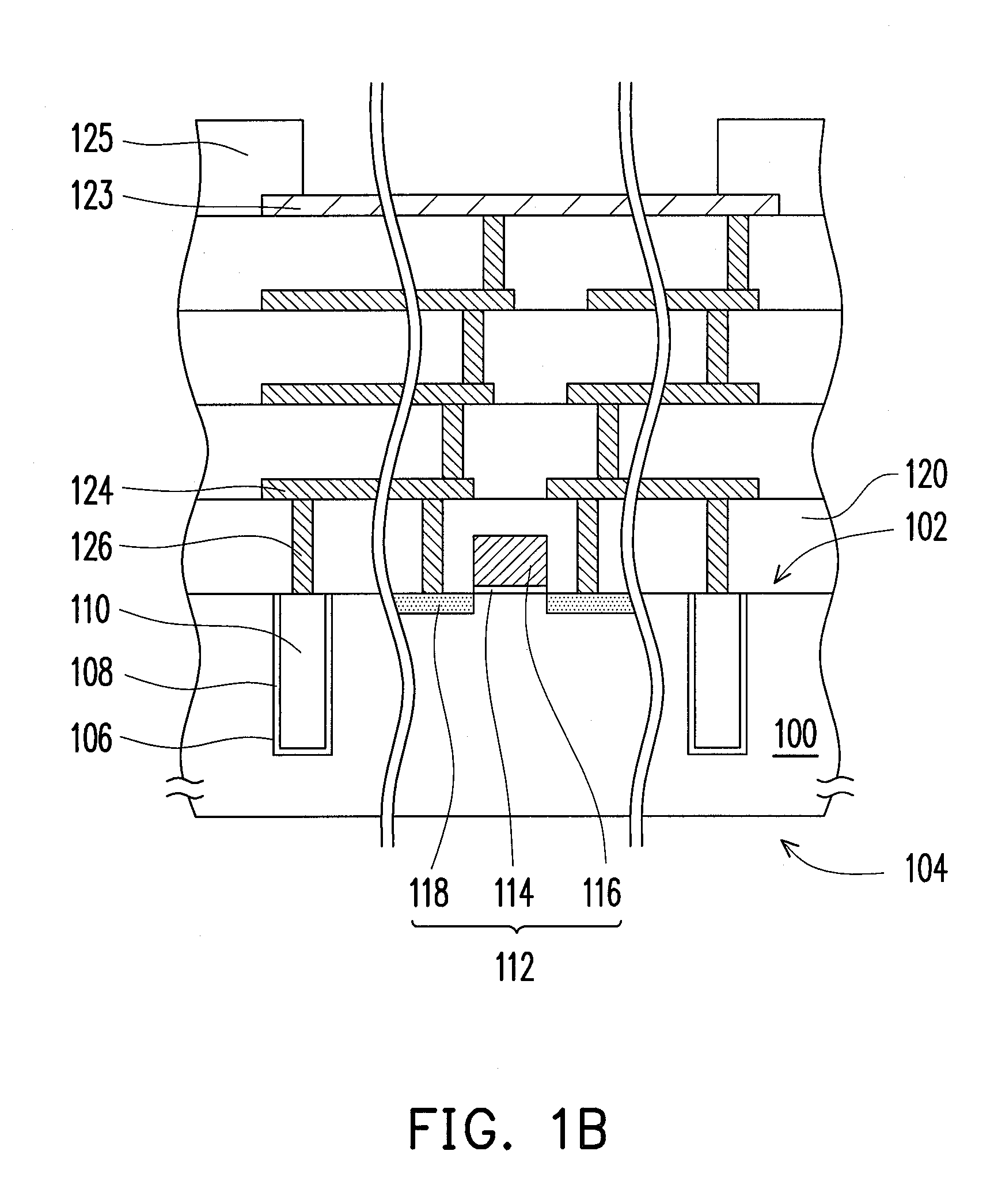Through substrate via process
a technology of through substrate and substrate layer, which is applied in the direction of semiconductor/solid-state device manufacturing, basic electric elements, electric apparatus, etc., can solve the problems of high temperature during the fabrication of the semiconductor device to be formed, affecting the performance of the device, and raising the difficulty of the cmp process
- Summary
- Abstract
- Description
- Claims
- Application Information
AI Technical Summary
Benefits of technology
Problems solved by technology
Method used
Image
Examples
Embodiment Construction
[0026]Reference will now be made in detail to the present preferred embodiments of the invention, examples of which are illustrated in the accompanying drawings. Wherever possible, the same reference numbers are used in the drawings and the description to refer to the same or like parts.
[0027]FIGS. 1A-1D depict, in a cross-sectional view, a TSV process according to an embodiment of the present invention. Referring to FIG. 1A, a substrate 100 is provided, which may be a silicon substrate. The substrate 100 has a first side 102 and a second side 104 opposite to each other. Holes 106 are then formed in the substrate 100 at the first side 102. The method for forming the holes 106 is, for example, performing a lithography process and an etching process in sequence. Subsequently, a dielectric layer 108 is formed on the substrate 100. The material of the dielectric layer 108 may be silicon oxide or silicon nitride, and the forming method thereof can utilize CVD to form the film conformally...
PUM
 Login to View More
Login to View More Abstract
Description
Claims
Application Information
 Login to View More
Login to View More - R&D
- Intellectual Property
- Life Sciences
- Materials
- Tech Scout
- Unparalleled Data Quality
- Higher Quality Content
- 60% Fewer Hallucinations
Browse by: Latest US Patents, China's latest patents, Technical Efficacy Thesaurus, Application Domain, Technology Topic, Popular Technical Reports.
© 2025 PatSnap. All rights reserved.Legal|Privacy policy|Modern Slavery Act Transparency Statement|Sitemap|About US| Contact US: help@patsnap.com



